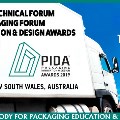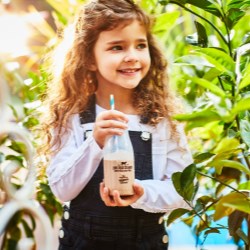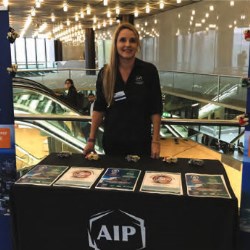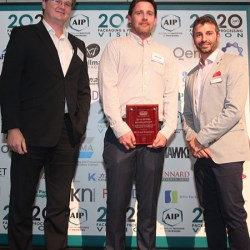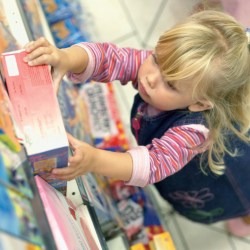If this is your company, CONTACT US to activate Packbase™ software to build your portal.
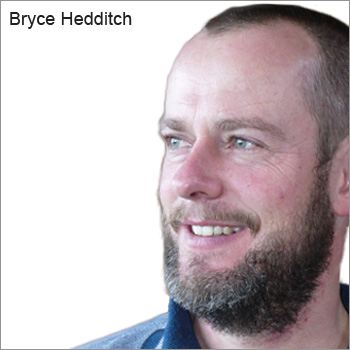

The September meeting of Australian Institute of Packaging (AIP) in Victoria was about sustainability and as diverse as the messages about it were the three presenters, on face value. But, at the conclusion of the evening it was basically the same message that sustainability is like beauty, initially in the eye of the beholder. But like beauty it does need constant attention!
Bryce Hedditch who operates Suspakt Consulting and declares he is "Passionate about Packaging" and "Serious about Sustainability" commenced the proceedings and took the participants on a roller-coaster ride encompassing his past achievements and now his concentration on sustainability.
He based his discussion on the adage "To every action there is always an equal and opposite reaction" and linked the current dilemma about a sustainable planet to the fossil fuel era and the march toward western "givens" by developing nations. But, he switched focus by saying forget about the planet and posed the question, "Can we save ourselves?".
Bryce contended that climate has always changed. Man may be influencing, but is probably not driving change and that the planet has always evolved. Therefore sustainability of the people will be achieved if there is focus in two main areas. Food supply is under pressure and adaptation to the changes mankind is experiencing is vital to continue with our quality of life.
He went on to show pictorial examples that not everyone has the luxury of quality or quantity to simply survive day to day. Possible solutions can come from those that have looking after those that do not:
- Societies with discretionary cash need to lead the charge.
- Corporations with discretionary cash need to lead the charge.
- Individuals with discretionary resources need to lead the charge.
He continued that the packaging industry can make positive inroads by measuring what is being done but with a more holistic approach than may have been in the past. Sustainability measures and benchmarks need to be determined and as do the stakeholders that can bring about change.
Bryce concluded his presentation with the thought, "The expectation of consumers and customers is that we make it, we sell it, and we are making informed, responsible decisions." But, are we?
The second speaker was Nicholas Harford, Managing Director Principal Corporate Social Responsibility Equilibrium. Equilibrium is a sustainability strategies and management company, which brings together expertise and experience across environmental knowledge, corporate, technical, government and communications to offer practical strategies and solutions that enhance sustainability, innovation and reputation.
Sustainability programs are directly proportional to regulations which have direct and indirect impact, as well as influence upon the supply chain but often throw up opportunities that may otherwise have gone unnoticed. Topically, Green Energy Futures, the encompassing program and terminology for the looming carbon tax, was analysed in some detail.
He related that direct costs will be the carbon tax upon the top 500 emitters of CO2e, whilst indirect costs will fall upon both industry and the population in general. Increased energy costs of gas and non-renewable electricity, costs of materials including cement, steel and aluminium. Increased costs of services such as freight and logistics, and changed reporting procedures are all indirect costs.
But as promised, opportunities are latent. Mr Harford went on to say that without a carbon tax electricity costs will raise twice as much as if it were business as usual. There are several opportunities under the Food and Foundries Investment Program.
Consumers are awake to greenwashing evidenced by the growth in complaints about green advertising made to the ACCC (None in 2008 to 500 last year). A survey revealed a number of interesting conclusions to prove the point: spin is alive and well in advertising about sustainability and "green" claims but the trend is not for longevity. An analysis of reports and company literature has shown a trend to use less rather than green indicators.
Another survey showed that the packaging industry was determined by consumers to be the fifth most harmful to the environment. Most people think products are over packaged. This behoves manufactures and industry associations to focus on corporate social responsibility and have staff enjoin customers and the public in general, to better understand the benefits of packaging.
Some detailed information was conveyed about the costs and benefits of three recent innovations in wine packaging. The OI lean and green glass bottle, the Tetra Pak paperboard and the PET bottle developed by VIP were each summarized and the sustainability benefits clearly shown.
Peter Bury, Director Sustainability and Innovation at PACIA (Plastics and Chemicals Industry Association) indicated at the onset, "I don't know how to tell you this, measuring beyond a recycling rate" but after a good half hour he had told the group a lot.
His message was underpinned by a previous personal indoctrination that you really only learn when you are outside your comfort zone. He had a few outside their comfort zone as he rolled out the PACIA strategy of managing sustainability.
The chemicals and plastics sector is the third largest manufacturing sector and supports most of other sectors of the economy. Packaging is the largest user of plastics in Australia at approximately 35%. A four picture slide showed clearly how plastics technology has been, and continues to be, the catalyst to reduction in the use of raw materials. The saving of lives by plastic derived air bags in modern motor vehicles was one. The quality of life afforded by the packaging of food in plastics is also linked to the reduction in spoilage and waste of food.
PACIA has enjoined a raft of companies, Government and NGO departments in its Sustainability Leadership Framework program which focuses upon operations in the workplace, the supply chain and transformation. Eleven functions have been identified and each has a specific outcome that leads to a more sustainable country and society.
Much research indicates that the packaging industry needs to be aware that 70% of environmental opportunity is locked in at design stage and designers require support with credible, accessible information. PACIA is a foundation signatory to, and industry representative on, the Australian Packaging Covenant and the message was clearly conveyed that only for this initiative by industry Black Ink Legislation would now be in place and many companies would face higher and more complex compliance costs in relation to packaging legislation.
One of the partnerships is with Sustainability Victoria and EPA and has led to the production of the Design for Sustainability with Plastics, or D4S program. This is a series of documents that sets out how to minimise life cycle impacts via better design and gives strategies, technical information and many references.
- Design for sustainability with plastics
- Plastics and the environment
- Degradable polymers
- Sustainable packaging
These were highlighted out of the twelve dot points as being linked close to packaging, but the others could also be considered in any business decision.
Having given the recipe for more sustainability in package design, Peter then turned to some of the issues that must be considered post manufacture and gave some measurable examples of how light weighting has reduced the demand on finite resources and impacted upon the whole supply chain.
Much discussion took place during a question and answer period and in private conversations, but the final message from PACIA also summed up the other presenters' views.
- Deal with whole-of packaging life cycle
- Sustainable Design
- Add light weighting
- Consider other metrics, measures
- Retain focus on recycling
- Reduce landfill and deal with litter
- More work to be done in measurement and communication
It is arguably true that less is the new green when you take into account all of the lessening that has been achieved in packaging technology and that of suppliers of raw materials.


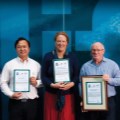
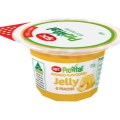

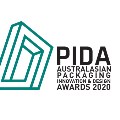
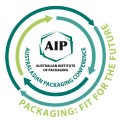
.jpg)











